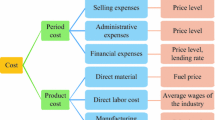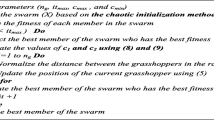Abstract
Nowadays, artificial intelligence is commonly used in many fields including medicine, chemistry, and forecasting. In this paper, artificial intelligence is applied to electricity demand forecasting due to the demand for this from both providers and consumers at this time. In order to seek accurate demand forecasting methods, this article proposes a new combined electric load forecasting method (SPLSSVM), which is based on seasonal adjustment (SA) and least square support vector machine (LSSVM) optimized by the particle swarm optimization (PSO) algorithm, to forecast electricity demand. The effectiveness of SPLSSVM is tested with a dataset from New South Wales (NSW) in Australia. Experimental results demonstrate that the SPLSSVM model can offer more precise results than other methods mentioned in the literature.
Access this chapter
Tax calculation will be finalised at checkout
Purchases are for personal use only
Similar content being viewed by others
References
Li DC, Chang CJ, Chen CC, Chen WC. Forecasting short-term electricity consumption using the adaptive grey-based approach: an Asian case. Omega. 2012;40(6):767–73.
Hsu LC. Using improved grey forecasting models to forecast the output of opto-electronics industry. Expert Syst Appl. 2011;38(11):13879–85.
Kheirkhah A, Azadeh A, Saberi M, Azaron A, Shakouri H. Improved estimation of electricity demand function by using of artificial neural network, principal component analysis and data envelopment analysis. Comput Ind Eng. 2013;64(1):425–41.
Chang PC, Fan CY, Lin JJ. Monthly electricity demand forecasting based on a weighted evolving fuzzy neural network approach. Int J Electr Power Energy Syst. 2011;33(1):17–27.
Moghram IS, Rahman S. Analysis and evaluation of five short-term load forecasting techniques. IEEE Trans Power Syst. 1989;4(4):1484–91.
Bates JM, Granger CW. The combination of forecasts. Oper Res Q. 1969;20(4):451–68.
Dickinson JP. Some comments on the combination of forecasts. Oper Res Q. 1975;26(1):205–10.
Eberhart R, Kennedy J. New optimizer using particle swarm theory. In: Proceeding of the Sixth International Symposium on Micro Machine and Human Science; IEEE, Piscataway; 1995. p. 39–43.
Suykens JAK, Vandewalle J. Least squares support vector machine classifiers. Neural Process Lett. 1999;9(3):293–300.
Iplikci S. Dynamic reconstruction of chaotic systems from inter-spike intervals using least squares support vector machines. Physica D. 2006;216(2):282–93.
Author information
Authors and Affiliations
Corresponding author
Editor information
Editors and Affiliations
Rights and permissions
Copyright information
© 2015 Springer International Publishing Switzerland
About this paper
Cite this paper
Li, Z., Zhang, X., Li, Y., Liu, C. (2015). Day-Ahead Electricity Demand Forecasting Using a Hybrid Method. In: Wong, W. (eds) Proceedings of the 4th International Conference on Computer Engineering and Networks. Lecture Notes in Electrical Engineering, vol 355. Springer, Cham. https://doi.org/10.1007/978-3-319-11104-9_41
Download citation
DOI: https://doi.org/10.1007/978-3-319-11104-9_41
Publisher Name: Springer, Cham
Print ISBN: 978-3-319-11103-2
Online ISBN: 978-3-319-11104-9
eBook Packages: EngineeringEngineering (R0)




